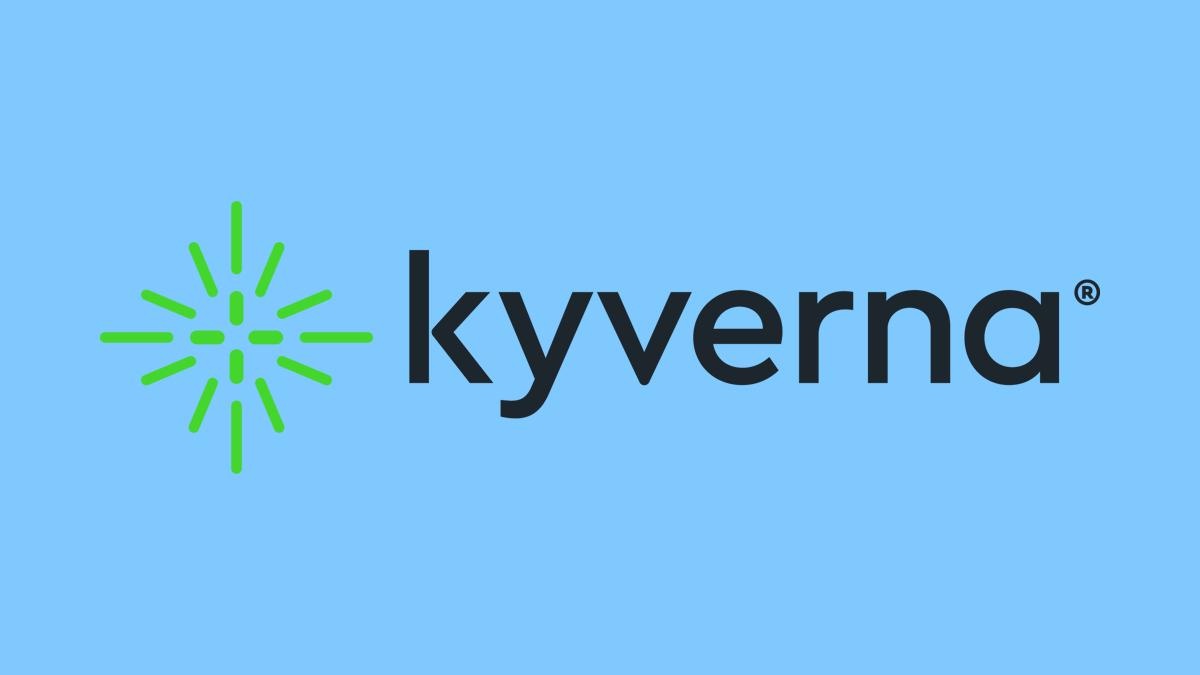What can pharma marketing learn from other regulated industries?

The financial world, like the pharmaceutical industry, must operate within a tightly-defined regulatory environment, and in doing so has proved adept at connecting with its customers. No one industry is ever quite like another, but there are some valuable lessons for pharma marketing from examining how the financial sector uses technology, builds brands on social channels and approaches digital content.
In this article Joanna Carlish, managing director of financial services at Tag Americas, and Robb DeFilippis, Tag Americas’ managing director, life sciences, go head-to-head to discuss marketing within a regulated industry.
Virtual connections
This is an area where only ‘approved emails’ from pharma sales reps to HCPs have historically approached standard practice, with virtual e-detailing or eRep activities more likely to be still in the pilot stage than in regular use. Nevertheless, the advent of COVID-19 is forcing pharma, and many other sectors, to make some radical changes.
Joanna: “This is a really interesting time and what we’re seeing is that financial agents and the retail banking environment are embracing the challenge and the opportunity to connect with people in their homes.
“It allows them to establish a different relationship, with a higher level of trust, because they’re engaging people within their comfort zone, be that in their living room, their home office or even the garden. Although it has been challenging for some, the types of relationships being built are evolving. The key is adapting existing legacy and traditional printed material for the digital environment.”
Robb: “In pharma the approaches are varied, partly because our clients have any number of customers, including - but not limited to - healthcare practitioners, payers and insurance companies. Clearly, over the last few months, sales reps have had limited in-person access to HCPs, which has presented a challenge.
“A lot of printed materials have been migrated to digital so that patients can opt-in to receive digital communications or HCPs can receive digital product or disease state information in the form of rep-triggered emails and microsites. Interactions between sales reps and HCPs has shifted to more digital forms of communication as a result of the lack of face-to-face interaction.
“This presents a big opportunity for unbranded social content, medical education, patient and caregiver engagement, social activity and community management-type efforts aimed at starting online conversations. At the moment, it's really all about earning and maintaining patient and HCP trust when it comes to pharma marketing.”
Engagement channels
When examining how companies are engaging with their customers and other stakeholders, pharma has not lagged behind. In terms of its use of social and online channels, pharma has even - on occasion - moved quicker than some of the major consumer brands in starting to use channels like Twitter. However, the challenge the industry has faced is around making greater, and more meaningful, use of the digital channels that are available, which is where it could learn from other sectors.
“Hyper-personalisation is one of the marketing trends for 2020 I’m most excited about… It's about making sure the communication is personally addressed to the audience, and hitting the customer at the point they are most active in their buying journey”
Joanna Carlish
Joanna: “We have a client who has transformed an existing platform for distributing email marketing into something that can help support sales discussions. Sales calls that now have to start with a phone call are supported by digital and social content straightaway. Before, there would have been 12 people in a meeting room with a notepad.
“We're seeing a vast amount of video being embraced - now the transition from print to digital has genuinely happened, and the conversations about video are evolving, ‘what can we do now with video or social to make that more interactive?’ In the online learning space, one of our clients had an uptake of about 70% of their engagement with their customers by developing online tutorials. In that instance, the idea of modular-based video is key, especially for regional audiences that need some level of local adaptation in order to create messaging within content that resonates.
“There is a strong emphasis on regulated industries having a voice and being ethical, and social is a great way to be able to deliver those messages - partly because you can reach your audience at whatever point they are in their decision-making funnel.”
Robb: “We’re seeing a surge in social activity, a lot of podcasts and community management-type efforts to start an online conversation and earn trust that way. As a result there is a huge demand for trustworthy content. Moving imagery continues to be an essential part of the mix, for example Key Opinion Leader videos serve to share these professionals’ expertise and create trusted medical and promotional content to grow engagement and encourage patient-HCP dialogue. Utilising 3D animation, motion graphics, illustration and data visualisation, Mechanism of Action videos are created to visually explain drug or device impact. These two examples have been traditional pharma marketing tactics, but they are being ramped up even more as the need for content has increased with the proliferation of digital platforms and telemedicine.
“As people increasingly have live, digital interactions with healthcare professionals or providers, there's opportunity to inject some motion graphics and video into the process that will get messages out to either patients directly or to HCPs and payers. Pharma companies can also play a large role in the creation of ‘communities of care’, which allow them to share knowledge and build up trust through digital channels.”
Content consistency
The proliferation of multi-channel activity demands a really strong focus on consistency of content across the different channels companies use. It’s a challenge that pharma and any industry working across multiple geographies, with a multitude of local agency partners, will know all too well.
Joanna: “Within the financial services sector ensuring consistency of content across different channels is happening at different scales. We often find that we're able to, especially on the global scale, help assess and research that level of consistency on behalf of our clients to present to them with a view as to what's happening at a regional level. When you expand globally it becomes an even bigger challenge, especially when you start to build in language and cultural variations. That's obviously a challenge that's relevant to all industries.
“As institutions think about what content and messages they're putting out, it's a great opportunity to assess where things are. Do they have the right tone? Is there legacy branding? How can we help consolidate all of that material? It has to evolve to focus on the quality, rather than quantity, of content and that can only be defined by the data and ROI. Financial institutions have been assessing how much they're producing and what's really resonating with the market right now.”
Robb: “The companies that are doing it well are creating libraries of pre-approved imagery, claims, references and other marketing components that help speed-to-market, consistency in message and branding and also minimise risk. Within this, the progressive pharma companies are utilising modular content to increase brand standards.
“There's quite a way to go when it comes to automation and it’s a real opportunity for pharma to serve up a unique experience to a user, which is a completely different approach to a more generalised method based on demographic information that is either public domain or has been opted-in by a user. The combination of wearable technology, opted-in point-of-care data collection and telemedicine presents some very legitimate, less risky and more controlled opportunities for pharma companies.”
Personalising marketing content
The pharma industry, and healthcare in general, faces huge issues with how individuals’ data is used to further their health and provide them with more relevant healthcare content that cuts to the heart of debates about privacy and public health. At the same time, consumer expectations are for experiences that are tailored to their specific needs. How are regulated industries approaching the personalisation, or even hyper-personalisation, of content?
Joanna: “I love hyper-personalisation, it’s one of the financial sector’s marketing trends for 2020 that I’ve been really excited about. The idea is about really tapping into where the customer is in their journey. It's about not only making sure that the look and the feel of a communication is personally addressed to the audience, but going beyond that to really make sure that it's hitting the potential customer at the point at which they are most active in that part of their buying journey.
“To me, that's really exciting because there are so many ways to do that. I think that's what helps level-up the success of a financial institution's engagement and level of trust with their customers when they get that right. It just means so much to the customer when their trusted financial resources are talking to them at that particular time when it's most needed.”
Robb: “Some of the ways folks are utilising digital channels to take more control of their own health, has made them a little more willing to give up some of that personal information that can then be used to serve up more personalised experiences. Whether that’s in the form of ads or content, it can help create awareness and/or influence behaviour – by either driving people to an HCP to discuss something or to flat out purchase their product if it's available over-the-counter.
“As digital becomes more and more the norm, in terms of how people interact with their HCPs, it’s another opportunity for more data collection. Should the patient opt-in, they can then be served up more personalised content that can ultimately change behaviour and impact positive patient outcomes.”
Regulated industry learnings
There’s clearly already a lot that pharmaceutical marketing gets right, but the way the financial services industry has taken learnings from the retail sector and adopted them for the highly regulated way in which it must work provides some pointers to the future.
The sector has been able to strike a more approachable tone with its stakeholders, supporting it with libraries of pre-approved content that increase message consistency and minimise risk.
As the public becomes increasingly comfortable with exchanging a measure of personal data for more personalised communications, financial companies have been able to build trust and engage potential customers at key decision-making points in their journey with content that really resonates with them.
Whether pharmaceutical companies can convert old ways of approaching a topic into something that their audiences would happily read on a Saturday morning, having a cup of coffee, remains to be seen. Nevertheless, taking a more personalised approach to content that is adaptable while remaining consistent could help messages resonate with the pharmaceutical industry’s diverse stakeholders.
About the authors
Joanna Carlish, managing director, financial services, Tag Americas
 Joanna leads Tag’s Financial Services division in the Americas, working with top tier banking, retirement, investment and insurance organisations. She is an expert in improving internal process and enhancing existing resources to transform traditional marketing operations. Her primary focus areas include; service delivery; enhancing creative; delivering innovation and thought leadership content; continuous improvement; operational excellence; and business transformation initiatives. Joanna began her career at Tag as an Account Manager with Banco Santander in London. She went on to support Sony Group, before relocating to Chicago in 2012 to lead an on-site creative studio, dedicated to producing global campaign adaptations and local marketing materials for Zurich's North American business. Since 2016, Joanna has led Tag's client partnerships in the Financial Services sector in the US, providing dedicated creative production and strategic sourcing/print management services.
Joanna leads Tag’s Financial Services division in the Americas, working with top tier banking, retirement, investment and insurance organisations. She is an expert in improving internal process and enhancing existing resources to transform traditional marketing operations. Her primary focus areas include; service delivery; enhancing creative; delivering innovation and thought leadership content; continuous improvement; operational excellence; and business transformation initiatives. Joanna began her career at Tag as an Account Manager with Banco Santander in London. She went on to support Sony Group, before relocating to Chicago in 2012 to lead an on-site creative studio, dedicated to producing global campaign adaptations and local marketing materials for Zurich's North American business. Since 2016, Joanna has led Tag's client partnerships in the Financial Services sector in the US, providing dedicated creative production and strategic sourcing/print management services.
Robb DeFilippis, managing director, life sciences, Tag
 Robb DeFilippis is an accomplished marketing operations executive with 25 years of experience leading organisations and clients to more efficient, profitable and innovative creative production, sourcing and business process excellence. Robb has held leadership positions at major ad agency networks including Omnicom, WPP, Publicis and IPG, across sectors such as CPG, health and beauty, finance, automotive and fashion. He has dedicated the last 10 years of his career to servicing the life sciences sector and continues to serve this industry. For Tag, Robb’s emphasis is building highly functioning, client-centric, creative delivery teams who execute across all media and regulatory tactics including digital, print, outdoor, video, social, broadcast, MLR submissions and packaging – serving audiences comprised of HCPs, patients, sales and point-of-care.
Robb DeFilippis is an accomplished marketing operations executive with 25 years of experience leading organisations and clients to more efficient, profitable and innovative creative production, sourcing and business process excellence. Robb has held leadership positions at major ad agency networks including Omnicom, WPP, Publicis and IPG, across sectors such as CPG, health and beauty, finance, automotive and fashion. He has dedicated the last 10 years of his career to servicing the life sciences sector and continues to serve this industry. For Tag, Robb’s emphasis is building highly functioning, client-centric, creative delivery teams who execute across all media and regulatory tactics including digital, print, outdoor, video, social, broadcast, MLR submissions and packaging – serving audiences comprised of HCPs, patients, sales and point-of-care.











